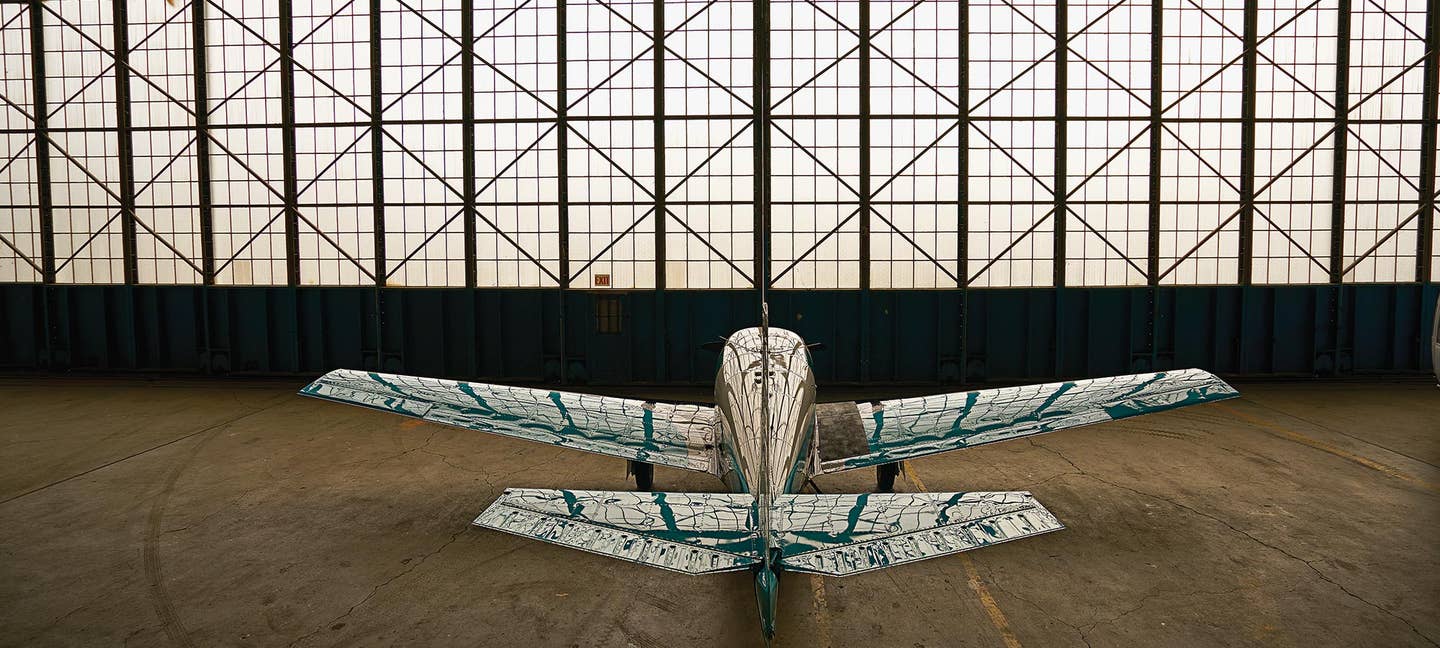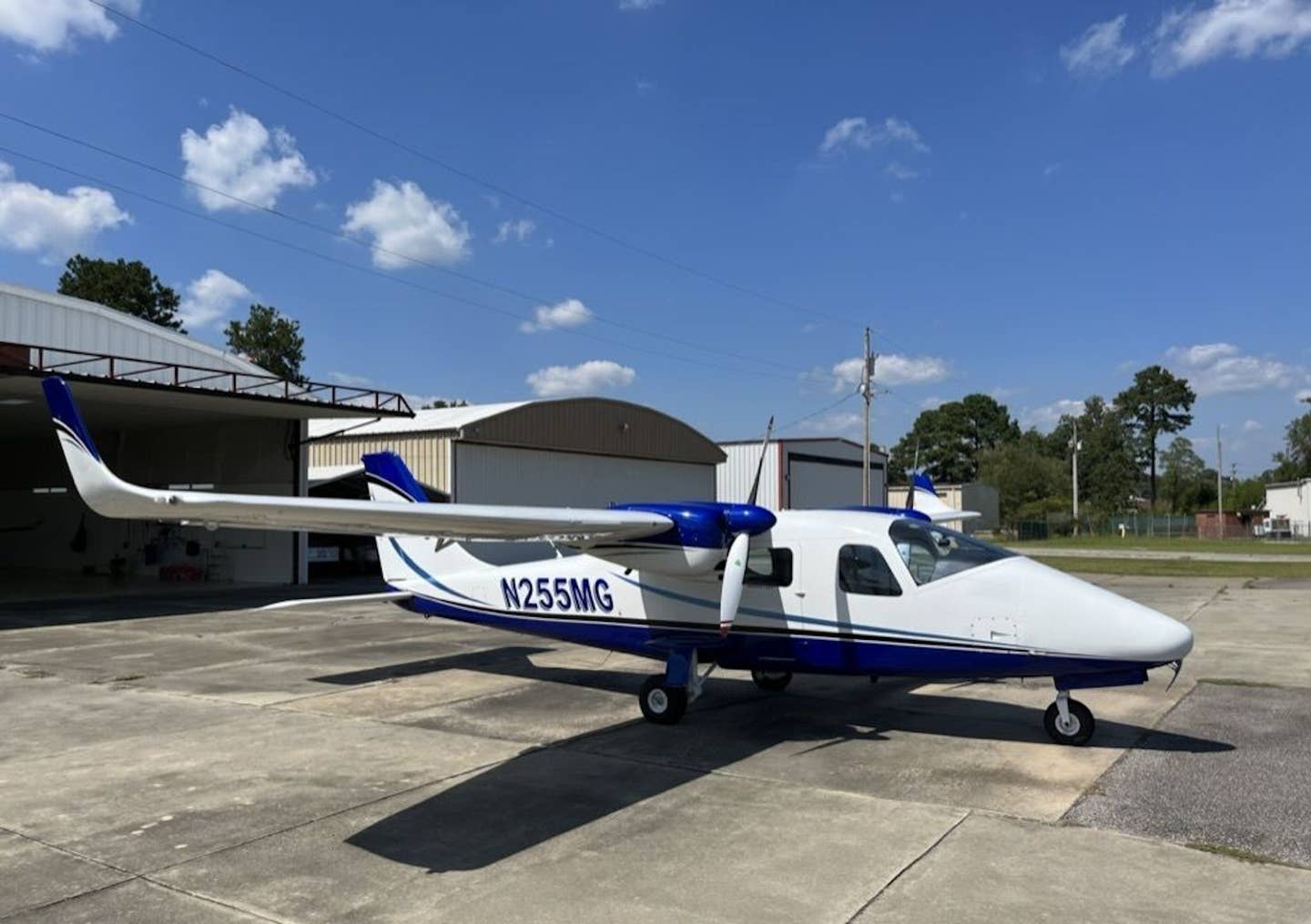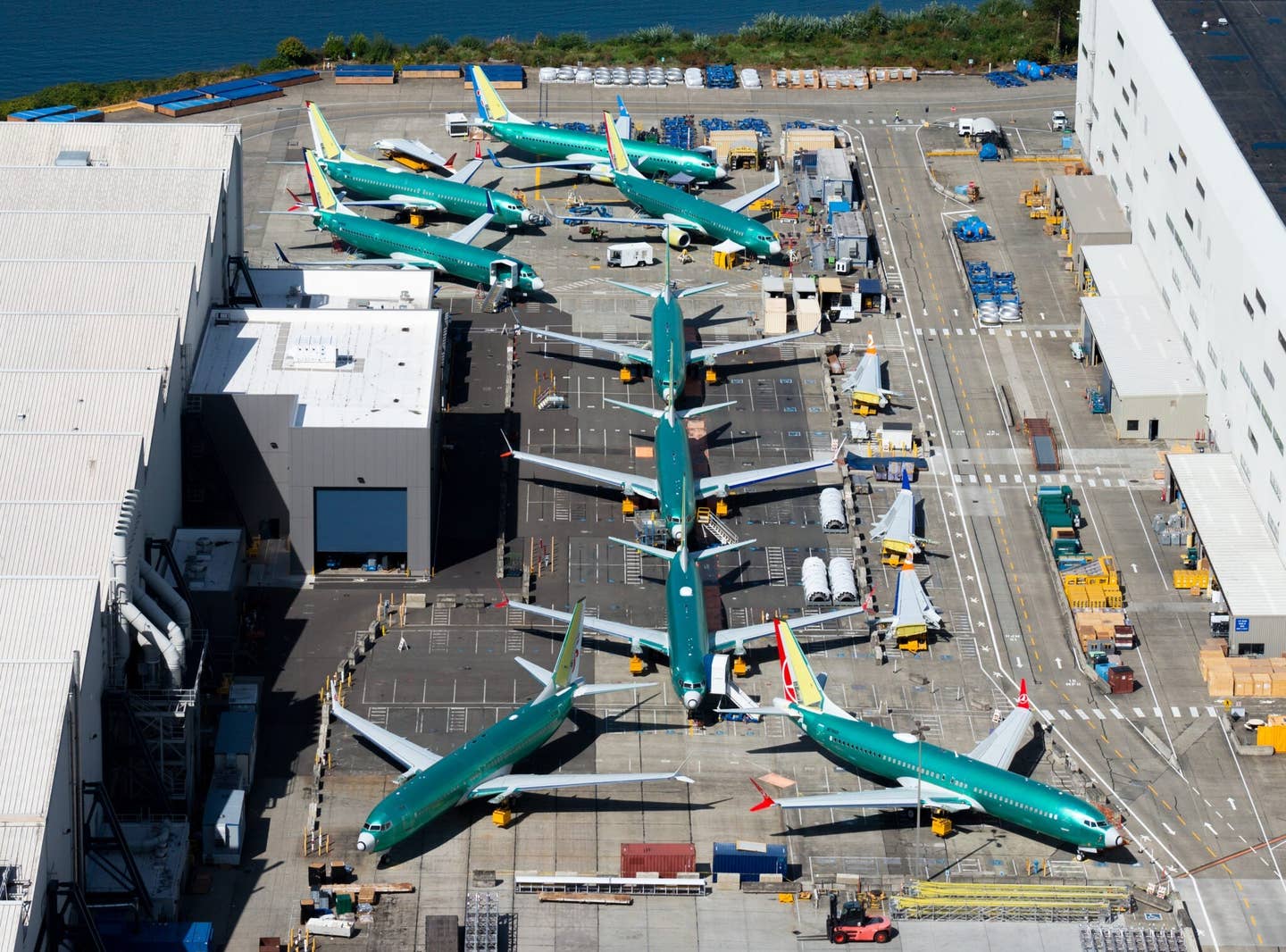
The first thing you see when you look at an airplane is its exterior. The design and condition of the paint can say a lot about how much an aircraft owner cares about his or her airplane. Yet, because of the cost, many owners wait as long as possible to address the exterior of their airplanes. A new interior makes for improved comfort and, with ever-evolving glass-panel technologies, avionics are taking up a greater portion of aircraft owners’ flying budgets. However, before you upgrade the interior, make modifications to the engine, or consider installing fancy navigators and glass displays, you should make sure the paint is in good shape. Teresa Arredondo, owner of ArtCraft Paint in Santa Maria, California, says that waiting to address the exterior is a common mistake aircraft owners make. “People extend and extend and extend the life of the paint without understanding the importance of the frame. At any time you can put in new avionics. At any time you can change the propeller. At any time you can replace the windows. But if you don’t protect and take care of the fuselage, one day you won’t have a place to put an engine, interior or avionics,” she says. “The way I see the fuselage is like the skin of a person. It’s the most important organ that you have.” She says the decision to delay painting an airplane is like repeatedly exposing your skin to the damage of UV rays without sunscreen. I’m embarrassed to say that I made that same common mistake. When I bought the Mooney M20C, which I named Manny, I knew it would need to be painted. Soon. In fact, the Mooney looked so bad that my initial reaction was not to buy the airplane at all. The mechanic who did the pre-buy inspection assured me that it was all surface corrosion, but he said I needed to take care of it within a year or the airplane would likely be grounded.
Without the protection of paint (or some other aluminum treatment if the airplane is bare aluminum), the disease of corrosion is pretty much guaranteed. And if the surface corrosion is not taken care of in a timely manner, it can become a much bigger problem. Arredondo likens corrosion to a cancer that keeps spreading until it is treated. And you don’t want to wait to address any corrosion issues until your mechanic says your airplane is grounded. As with people who delay or refuse cancer treatment, eventually the airplane will become terminally ill.
Arredondo says, “Fifty percent of the customers come here because their airplane is sick already.” And that was definitely the case with Manny. Arredondo characterized his condition as “very sick.” “We did a surgery and chemo, and now it’s cancer-free, but that doesn’t mean that the disease won’t come back,” she says.
Choosing a Paint Facility
Because of the surface corrosion on the Mooney, I started looking for paint facilities shortly after I bought it. Several people told me that I should have my paint done in another state because the environmental laws in California make the work more expensive. They also said that the quality would be inferior because of the restrictions on materials that can be used for stripping and painting. However, Arredondo says that the supposed difference in state-to-state environmental laws for aircraft paint is incorrect. The rumor started because California was first to implement strict environmental protection regulations for paint processes and products. But today the requirements for the paint and chemicals used in the process of stripping and painting aircraft are regulated by federal entities—the Environmental Protection Agency and Occupational Safety and Health Administration—and the same rules apply everywhere in the country. I made several inquiries to places in Texas, Arizona and Oklahoma. The prices were significantly different, ranging from about $9,000 to $20,000. The most expensive quote I got was from Arizona, a state that my misinformed friends told me would have the lowest costs. I also considered the cost of travel into the total price. While it’s worth shopping around, price should not be the first concern when painting an airplane. It is more important that the job is done right. One of the people I spoke with before committing to a paint facility was Jolie Lucas, the founder of Mooney Ambassadors who I befriended as a result of buying Manny. Lucas has had two Mooneys painted by ArtCraft Paint, and she gave the company her wholehearted recommendation. ArtCraft gave me a quote in the summer of 2015, and it was in the midrange of those I received. It was also reassuring to know that ArtCraft had already painted more than 50 Mooneys, so it knew the airplane inside and out.
Arredondo told me that the quality of the paint job not only makes a major difference in the airplane’s longevity, but, in some cases, a bad shop could also render the airplane unairworthy. It is of utmost importance to know what methods the facility uses for stripping. Arredondo says that for airplanes with popped rivets, like the Mooney, it’s better to do chemical stripping because mechanical stripping has the potential to damage the rivet heads. Also, the aluminum skin is extremely thin, particularly on the control surfaces, and excessive scuffing could damage them.
It’s worth doing ample research to make sure your beloved airplane is treated well. If you were having surgery, wouldn’t you do everything you could to find the best surgeon you could afford? I’m glad I chose ArtCraft.
The Process
Despite the fact that the paint on Manny’s fuselage and wings was dull and had many areas where the aluminum was showing through, I was seduced by colorful gadgets and decided to take care of the avionics first (see the September 2016 issue of Flying).With the avionics all done, I knew the paint would have to be next. But I had exceeded my budget with the avionics and didn’t want to go through with the paint job right away. While I was far from proud of what the Mooney looked like, and despite the mechanic’s warning, I made the mistake of thinking I could milk it for another year or at least up until the annual. Fortunately for Manny and me, fate had another plan. A few weeks after I got the airplane back from the avionics shop, I got an email from a sales rep at ArtCraft regarding a quote he had sent me one year prior. The note said there was a slot available on short notice because a customer who was booked came on hard times. I decided to give Arredondo a call. We negotiated a deal on a Friday, and she said, “Can you bring the airplane in on Monday?” I’m not sure how long the phone went silent for, but my decision was made. Knowing Manny’s condition, I couldn’t say no. I would find the money. “Sure,” I said, “I’ll see you on Monday! ”During the quick 30-minute flight from KCMA to KSMX, I gazed out at the dilapidated wings and imagined what it would be like to fly a pretty airplane that was all my own.
The Design Process
Selecting the colors and paint scheme for an airplane is not an easy process. It's a decision you will have to live with for at least a decade — and hopefully a lot longer. Fortunately, I got help from a masterful designer in Philipp Steinbach, co-founder of Game Composites and designer of the GB1 GameBird. During the short time I had to figure out my final design while the guys at ArtCraft were stripping and covering the Mooney, I was in touch with Steinbach regarding the story I did about the GameBird (October 2016). He happened to be in limbo in England, waiting to move the company over to Bentonville, Arkansas. I mentioned that I was working on painting my Mooney, and he offered to help.
I loved the paint scheme of my old Cessna 170, so I decided to stick with the same colors: white, teal and black. I sent Steinbach a picture of the Cessna, and he came up with a terrific design — a perfect combination of retro and modern. He sent me a drawing, designed with Solidworks 3-D CAD software, which I could view on the eDrawings software on my iPad.
I sent the CAD design to ArtCraft, and Robert Mendoza did a terrific job of replicating Steinbach’s design. We made a few tweaks, however, and it’s amazing how much difference small details can make. Mendoza’s initial image had the black part on the belly ending about halfway down the nosewheel door. I sent the drawing to Steinbach, who pointed out that the line had the effect of making the already short M20C look even shorter. He suggested bringing the black line all the way in front of the gear door. It made the airplane look at least 1 foot longer than it is (oh … don’t I wish).
I also went back and forth about what color the horizontal stabilizer should be: teal, white, black or matched to the pattern on the wings. I finally settled on painting it all teal, and I’m happy with that decision.
I visited Manny while he was going through his surgery. The airplane was covered with tape and paper, and the access panels were stuffed with newspaper. In essence, Manny was wearing a hospital gown with some parts laid bare to be treated. Even though the image of the new design was taped to the side of the airplane, it was hard to imagine the final outcome.
A couple of weeks later, I walked back into ArtCraft’s 1940s-era hangar, which was beautifully restored just a couple of years ago. The airplane was parked right inside the large sliding-glass doors, and when I saw my airplane, it was hard to believe it was the same one I dropped off less than a month before. The popping colors and elegant lines made me fall in love with Manny all over again. It was indeed a stunning coat of paint.
There was only one small detail left. I had decided to switch my registration numbers, so the old numbers had to be placarded on temporarily while the new N-numbers were approved by the FAA and entered into the L-3 Lynx transponder. In the initial drawings, the N-numbers fit into the teal part of the airplane. But the teal section turned out to be too narrow to fit 12-inch-tall numbers. I was disappointed because I thought that covering up the stunning lines with a solid number would disrupt the design. But Mendoza came up with a terrific compromise. Rather than solid numbers, he applied outlined numbers instead. As a final tweak before they were painted on, the numbers were tilted in the same angle as the Mooney’s tail rather than angled backward, which is the norm and as Mendoza had originally designed them.
My pride in the Mooney has grown immensely since it was painted, and I still pinch myself when I look out over the uniquely colored wings. I’m excited to preserve the 43-year-old airplane for many years to come. I also think those who fly with me, particularly nonpilots, may feel better about climbing into the airplane too. It is easy to dismiss the advice of a mechanic unless he or she says, “Enough! It’s time to address this, and you can’t fly until you do.” But the decision to paint my airplane is one of the best I’ve ever made.
This feature was originally published in the April 2017 issue of Flying.

Subscribe to Our Newsletter
Get the latest FLYING stories delivered directly to your inbox






